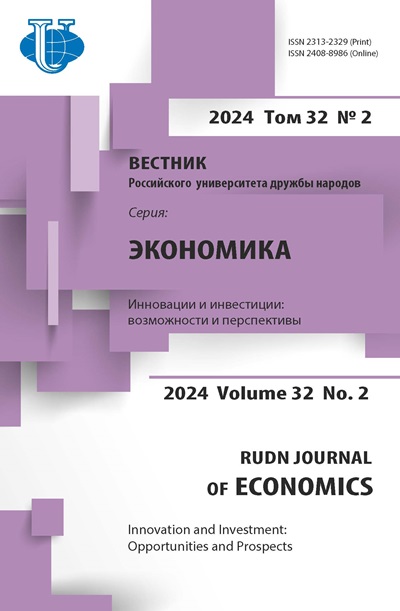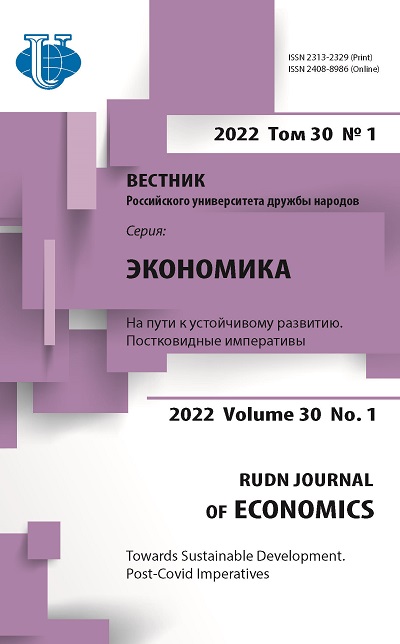The specifics of the banking regulation and supervision model in Iraq and its transformation under the influence of the Basel requirements
- Authors: Yunus Y.G.1
-
Affiliations:
- Peoples’ Friendship University of Russia
- Issue: Vol 30, No 1 (2022): TOWARDS SUSTAINABLE DEVELOPMENT. POST-COVID IMPERATIVES
- Pages: 20-32
- Section: WORLD CAPITAL MARKET
- URL: https://journals.rudn.ru/economics/article/view/30654
- DOI: https://doi.org/10.22363/2313-2329-2022-30-1-20-32
Cite item
Full Text
Abstract
Today it is difficult to imagine modern life without banks. Banks play an important role not only in the lives of individuals, but also in general, in the global economy. The efficiency of the banking system is of great economic importance. Based on this the importance of the banking system applying the rules and decisions of the Basel Committee, can ensure that the banking system can avoid the risks that can lead to entering a crisis and serious intransigence is necessary. The Iraqi banking system must comply with the decisions of the Basel Committee, both internal and external. Therefore, this article examines the specifics of the model of banking regulation and supervision in Iraq and its transformation under the influence of the requirements.
About the authors
Yasser Gazi Yunus Yunus
Peoples’ Friendship University of Russia
Author for correspondence.
Email: yaserir@yandex.ru
PhD student, Finance and Credit Department, Faculty of Economics 6 Miklukho-Maklaya St, Moscow, 117198, Russian Federation
References
- Alam, N., Zainuddin, S.S.B., & Rizvi, S.A.R. (2019). Ramifications of varying banking regulations on performance of Islamic Banks. Borsa Istanbul Review, 19(1), 49-64. http://dx.doi.org/10.1016/j.bir.2018.05.005
- Al-Azazi Shehab Ahmad (2012). Management of Islamic banks. Al-Nafais Publishing house, First Edition, Amman.
- Ameur, I.G.B., & Mhiri, S.M. (2013). Explanatory factors of bank performance evidence from Tunisia. International Journal, 2(1), 1-11.
- Bitar, M., Hassan, M.K., & Saad, W. (2020). Culture and the capital-performance nexus in dual banking systems. Economic Modelling, 87, 34-58. http://dx.doi.org/10.1016/j.econmod.2019.07.003
- Ferrouhi, E.M. (2017). Determinants of bank performance in a developing country: Evidence from Morocco. Organizations and Markets in Emerging Economies, 8(15), 118-129. http://dx.doi.org/10.15388/omee.2017.8.1.14201
- Finger, M., Gavious, I., & Manos, R. (2018). Environmental risk management and financial performance in the banking industry: A cross-country comparison. Journal of International Financial Markets, Institutions and Money, 52, 240-261. http://dx.doi.org/10.1016/j.intfin.2017.09.019
- Haidary, Q., & Abbey, B. (2018). Financial Performance of Commercial Banks in Afghanistan. International Journal of Economics and Financial Issues, 8(1), 242.
- Hayawi Nabil Abdul Rahman. (2015). Iraqi Banking Law. Beirut: AlAatek Publishing house.
- Izzeldin, M., Johnes, J., Ongena, S., Pappas, V., & Tsionas, M. (2021). Efficiency convergence in Islamic and conventional banks. Journal of International Financial Markets, Institutions and Money, 70, 101-179. http://dx.doi.org/10.1016/j.intfin.2020.101279
- Jadah, H.M., Murugiah, L.A., & Adzis, A.B.A. (2016). The effect of board characteristics on Iraqi banks performance. International Journal of Academic Research in Accounting, Finance and Management Sciences, 6(4), 205-214. http://dx.doi.org/10.6007/IJARAFMS/v6-i4/2354
- Khalil, A.S. (2018). Measurement of social responsibility according to the standard ISO 26000. Case study in Rushed bank. Iraq journal of market research and consumer protection. 10(2), 77-92.
- Kollmann, R., Enders, Z., & Müller, G.J. (2011). Global banking and international business cycles. European economic review, 55(3), 407-426.
- Mejia, A.L., Aljabrin, S., Awad, R., Norat, M., & Song, I. (2014). Regulation and Supervision of Islamic Banks. IMF Working Papers, 14(219). http://dx.doi.org/10.5089/9781498361590.001
- Miah, M.D., & Sharmeen, K. (2015). Relationship between capital, risk and efficiency: A comparative study between Islamic and conventional banks of Bangladesh. International Journal of Islamic and Middle Eastern Finance and Management, 8(2), 203-221. http://dx.doi.org/10.1108/IMEFM-03-2014-0027
- Pappas, V., Ongena, S., Izzeldin, M., & Fuertes, A.M. (2017). A survival analysis of Islamic and conventional banks. Journal of Financial Services Research, 51(2), 221-256. http://dx.doi.org/10.1007/s10693-016-0239-0
- Pignatel, I., & Tchuigoua, H.T. (2020). Microfinance institutions and International Financial Reporting Standards: an exploratory analysis. Research in International Business and Finance, 54, 101-309. http://dx.doi.org/10.1016/j.ribaf.2020.101309
- Rashid, M., Abdeljawad, I., Ngalim, S.M., & Hassan, M.K. (2013). Customer-centric corporate social responsibility: A framework for Islamic banks on ethical efficiency. Management Research Review, 36(4), 359-378. http://dx.doi.org/10.1108/01409171311314978
- Roslan, F. (2018). The Role of Policy Instruments on the Pattern of Diffusion: the Case of Solar Photovoltaic in Asia Pacific. International Editorial and Advisory Board, 4(1), 186-192. http://dx.doi.org/10.26417/ejes.v4i1.p186-192
- Saied Abdul Salam Lefta. (2017). Management of Banks and privacy of banking. Third edition. Baghdad: Press Book publishing.
- Samargandi, N., Fidrmuc, J., & Ghosh, S. (2014). Financial development and economic growth in an oil-rich economy: The case of Saudi Arabia. Economic modelling, 43, 267-278.
- Sobarsyah, M., Soedarmono, W., Yudhi, W.S.A., Trinugroho, I., Warokka, A., & Pramono, S.E. (2020). Loan growth, capitalization, and credit risk in Islamic banking. International Economics, 163, 155-162. http://dx.doi.org/10.1016/j.inteco.2020.02.001
- Yin, H. (2021). The impact of competition and bank market regulation on banks’ cost efficiency. Journal of Multinational Financial Management, 61(1), 100677. http://dx.doi.org/10.1016/j.mulfin.2021.100677















